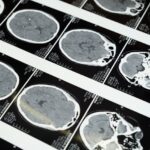What is Dual Diagnosis?
Dual diagnosis, also known as co-occurring disorders, results from someone having substance abuse issues while also suffering from a concurrent mental or physical health disorder. Sometimes there may be multiple mental health disorders manifesting simultaneously, which is not unusual for people who are experiencing drug or alcohol abuse.
Do Mental Disorders Cause Drug Addiction?
There is not always a direct causality between drug or alcohol addiction and mental disorders. Even if one occurs before the other, that does not mean it caused the following issue. Each individual has their own risk factors that come into play.
In certain circumstances, drug abuse can cause mental disorders, and mental disorders can also lead to drug or alcohol abuse. However, they can even exist independently with overlapping risk factors. [1]
The Harm of Self-Medication
Some people self-medicate with drugs or alcohol to deal with the unwanted effects of mental health disorders. At the same time, the physical changes caused by drugs or alcohol can significantly worsen mental health symptoms, causing a feedback loop.
This also creates the problem of that person then having to go through detox and withdrawal from the addictive substances, which come with its own hardships and will inevitably aggravate their mental disorder’s more severe symptoms. [3]
Signs of Possible Co-Occurring Disorders
Unfortunately, the signs of various mental disorders can apply to addiction-related symptoms as well. This can make it hard to determine if someone is suffering from both. There are a few signs that indicate the possibility of co-occurring disorders.
If you notice any of them, then it is essential to get diagnosed by a medical professional. Their severity will depend on the type of substance abuse and specific mental disorder.
The signs to look out for include the following:
- Abrupt changes in behaviour and moods
- Ignoring attempts to assist and avoiding treatment
- Inability to handle daily responsibilities (e.g., finances, work, school, etc.)
- Avoidance behaviour regarding social events and hobbies that were once important
- Suicidal ideations or actions
- An unusual disregard of health and hygiene
- Unusually impulsiveness
- Obvious impairments to cognition in
- Sudden changes to work or school performance
Most Common Mental Health Issues Dual Diagnosed With Addiction
Some mental health disorders are more often seen in relation to drug and alcohol addiction.
They include the following list:
1. Attention-deficit hyperactive disorder (ADHD)
People with ADHD may get prescribed stimulant medications to help them cope with the hyperactivity experienced by most people with ADHD. These medications can be habit-forming and lead to substance abuse. Self-medicating with alcohol or drugs to deal with ADHD is also unfortunately common.
2. Depression
This is one of the most common mental health disorders on the planet, with the World Health Organisation reporting a staggering 264 million being regularly diagnosed. [4] A lot of people with depression end up self-medicating with drugs or alcohol.
Unlike some other disorders, the crash that comes after the drug or alcohol wears off escalates the depression severely, which can lead to suicidal ideation or self-harming behaviours.
3. Post-Traumatic Stress Disorder (PTSD)
Individuals with PTSD do not produce the average amount of endorphins, leading them to use drugs or alcohol to get that same feel-good sensation provided by the hormones. Military veterans are especially susceptible to dual diagnosis with alcohol addiction and PTSD. They are also likely to have major depression as well. [5]
4. Eating Disorders (ED)
People with ED’s will often use drugs as a way to drown out feelings of hunger. This can have disastrous results as the body loses nutrients at an alarming rate, while hormones are changed due to substance abuse.
It is very dangerous, and these co-occurring disorders can lead to harmful physical side effects, including potential death.
Also, 94% of people hospitalized for eating disorders had a dual diagnosis with mood disorders (e.g., major depression, PTSD, OCD, etc). [6]
5. Generalized Anxiety Disorder (GAD)
This is one of the most prevalent mental health disorders, and the subscribed medication to minimize symptoms is often abused. There is also a likelihood that people with GAD will self-medicate to cope.
6. Obsessive-Compulsive Disorder (OCD)
Most people with OCD are also diagnosed with other, comorbid, mental health disorders (e.g., PTSD, GAD, ED, etc.). Obsessions and compulsive actions and thoughts characterize OCD. Many people self-medicate to deal with the anxiety and stress of this disorder.
7. Bipolar Disorder
Bipolar disorder is relatively common and involves manic and depressive episodes that can cause individuals to self-medicate. Due to extreme mood swings, this is also a disorder where subscribed medications are likely to either be abused or taken inconsistently. Approximately 2.9% of women and 2.8% of men are diagnosed with bipolar disorder. [7]
8. Borderline Personality Disorder (BPD)
Approximately 78% of people who are diagnosed with BPD end up with a comorbid substance abuse disorder. [8] There is also a higher likelihood of other mood disorders co-occurring. Many people with borderline personality disorder have impulse control issues, which can lead them to become addicted to drugs or alcohol.
9. Schizophrenia
People who have schizophrenia and are also addicted to a substance can be challenging to diagnose due to overlapping signs and symptoms. It is an incredibly dangerous mixture, and anyone experiencing hallucinations or delusions should get immediate medical assistance.
How is the Treatment for Dual Diagnosis Different?
Every case is unique, so there is no set treatment. Most facilities will try and treat both mental and addiction disorders at the same time, using different remedies. This can include medications, one-on-one or group therapies, and 12-step programmes, to name a few treatment options.
The first step will always be to detox from the addictive substance. The medical team can then begin to untangle the different symptoms to determine indicating specific treatments will be most beneficial.
Every person’s personal journey, risks, and medical history plays a part in which treatment options are chosen. Cognitive-behavioural therapies are quite common, as are combinations of subscription medications and alternative therapies (e.g., art therapy, animal therapy, exposure therapy, etc.) depending on which can have the most considerable positive impact on the co-occurring disorders.
Before coming up with an individualized plan, your doctor or medical team will need to know what risk factors apply to you and your medical history. Dual diagnosis usually involves risk factors that can apply to both of the disorders you are diagnosed with though that is not always the case. Once they have this information, it will be easier to determine what treatment will fit the best.
Risk Factors for Developing a Dual Diagnosis
Overlapping risk factors are often to blame for dual diagnosis. These come in several forms ranging from genetic predisposition to socio-economic status.
However, the most common risk factors include the following:
Triggers in the environment
- Any stress, trauma, or anxiety can increase the risk of abusing a substance or developing a mental health disorder
Exposure at an early age
- Alcohol or drug abuse at a young age alters the brain’s growth
- A family history of mental or addictive issues is a high-risk factor
Brain responses
- Certain types of drugs (e.g., marijuana, etc.) can mimic mental health disorders making it hard to differentiate between them
Genetics
- Genetic predispositions to both mental disorders and addiction are significant factors in around half of the people diagnosed
Getting the Right Treatment
Mental illness and addiction are usually treated separately, which is why it can be incredibly tricky to find the right solution for someone who has a dual diagnosis. Some treatment options have been showing promise in treating comorbidity.
They include the following treatment therapies, most of which can be found in rehabilitation facilities or community support centres.
1. Therapeutic Communities (TCs)
A large percentage of people with dual diagnosis either in or recently released from the criminal justice system. For those individuals, the community based therapeutic communities treatment option helps them learn to resocialize while also addressing their disorders and providing healthy, positive ways to cope.
This is helpful with various demographics dealing with substance abuse. [1]
2. Assertive Community Treatment (ACT)
The ACT programmes are most helpful for people with severe mental health issues like schizophrenia who are also experiencing addiction-related problems. This community treatment can focus on one person at a time and help them by assisting their psychological and physical wellbeing.
Most ACT resources are supplied by small, locally-based community programme’s with a heavy emphasis on individualized care.
3. Dialectical Behaviour Therapy (DBT)
DBT works to eradicate self-harm behaviours in people who have substance abuse problems and mental health disorders. This therapy helps individuals change patterns of behaviour and thinking to help create a more positive response to overwhelming social and emotional situations. The treatment can take place in one-on-one sessions or group settings.
4. Integrated Group Therapy (IGT)
IGT is a treatment option designed specifically for people who have drug or alcohol addiction and bipolar disorder. It involves combining cognitive-behavioural therapy and group drug counseling. The goal is to prevent relapse while helping people cope with mood swings, follow medication guidelines, and avoid high-risk situations. [2]
References
[1] https://www.drugabuse.gov/sites/default/files/rrcomorbidity.pdf
[2] https://archives.drugabuse.gov/news-events/nida-notes/2010/04/attention-to-bipolar-disorder-strengthens-substance-abuse-treatment
[3] http://citeseerx.ist.psu.edu/viewdoc/download?doi=10.1.1.590.3010&rep=rep1&type=pdf
[4] https://www.who.int/health-topics/depression#tab=tab_1
[5] https://www.researchgate.net/profile/Steven_Woodward/publication/7195466_Hippocampal_Volume_PTSD_and_Alcoholism_in_Combat_Veterans/links/5640d86a08ae24cd3e40b3bc.pdf
[6] https://www.nationaleatingdisorders.org/statistics-research-eating-disorders
[7] https://www.nimh.nih.gov/health/statistics/bipolar-disorder.shtml#:~:text=Prevalence%20of%20Bipolar%20Disorder%20Among%20Adults,-Based%20on%20diagnostic&text=An%20estimated%202.8%25%20of%20U.S.,%25
[8] https://www.ncbi.nlm.nih.gov/pmc/articles/PMC4010862/




